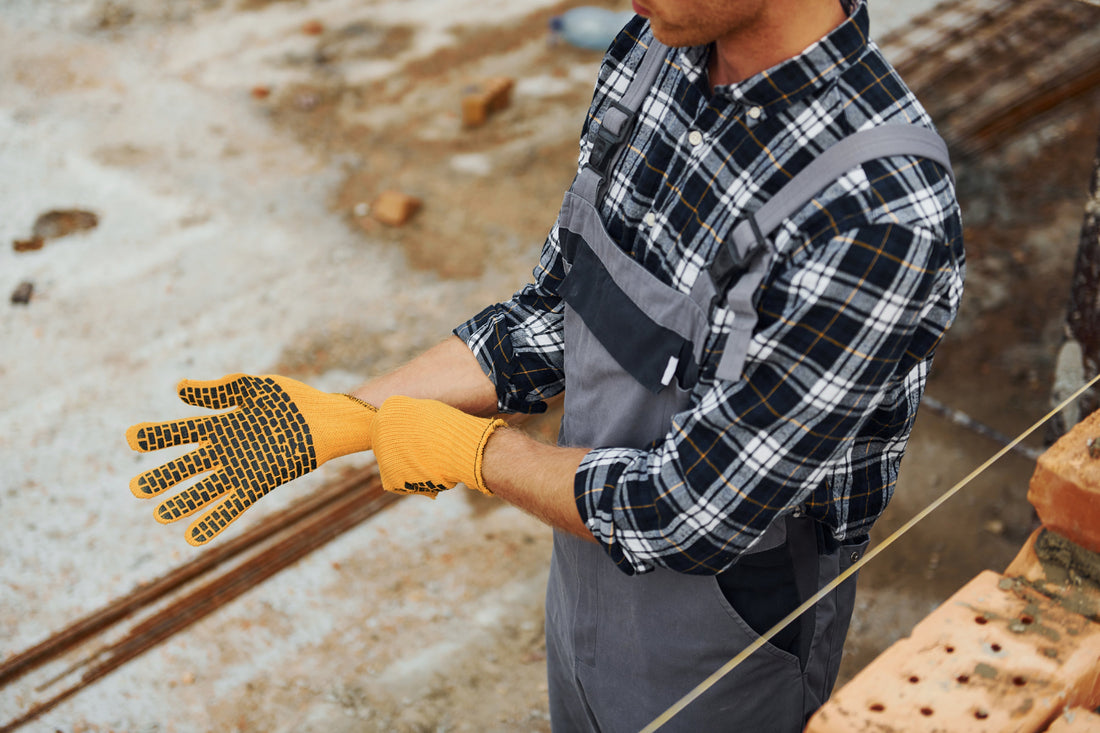Hand injuries are among the most common workplace hazards across industries that rely on manual labor. From construction zones and manufacturing floors to shipyards and waste management sites, hands are constantly exposed to potential impact threats. This is where ANSI 138 rated gloves, especially ANSI level 1 options, come into play. These gloves offer certified impact protection, ensuring both compliance with safety standards and genuine physical protection for workers.
Understanding ANSI/ISEA 138 Standards
The ANSI/ISEA 138 standard was developed to standardize the testing and rating of impact resistant gloves. Prior to this, no clear framework existed to evaluate how well gloves protected against blunt force trauma. ANSI/ISEA 138 brought clarity to the market, providing a way to compare gloves based on scientifically measured levels of protection.
The standard measures protection across the knuckles and fingers, which are most vulnerable to impact-related injuries. These gloves undergo stringent testing using a calibrated striker to determine the force that transfers through the glove material to the hand. Lower transmission means better protection.
Key Features of ANSI 138 Rated Gloves
What separates impact safety gloves that meet the ANSI 138 standard from generic options? These gloves are specifically engineered with protective materials over the fingers and knuckles, often made of thermoplastic rubber (TPR) or other high-resilience polymers. Here’s what to expect from these gloves:
- Defined impact zones across all fingers and the knuckle area
- Third-party certification based on real-world impact testing
- Clearly labeled ANSI 138 level for easy comparison
- Materials that absorb and disperse force while remaining flexible
The inclusion of such features ensures that employers and workers can trust the gloves' performance in unpredictable work conditions.
What to Look for in ANSI 138 Gloves
Not all gloves labeled as “impact-resistant” are made equal. For the best results, look for gloves that are third-party tested and clearly marked with their ANSI level. Here are a few other criteria to consider:
- Coverage: Make sure impact padding extends across all fingers and knuckles.
- Fit: A secure fit ensures padding stays in place during movement.
- Breathability: Workers in hot environments need gloves that allow airflow.
- Grip: Coated palms or textured surfaces enhance control, especially when handling slippery or wet materials.
- Durability: Look for materials that resist tearing or punctures, especially in high-abrasion tasks.
Explore Safety TUFF’s ANSI 138 rated gloves.

What Does ANSI Level 1 Mean?
ANSI level 1 impact gloves are designed for tasks where light to moderate impact risk exists. These gloves typically offer basic to moderate back-of-hand protection and are commonly used in industries where occasional, not constant, impact threats are present.
Workers in fields such as light construction, warehouse operations, and routine mechanical tasks benefit greatly from ANSI level 1 gloves. While these gloves may not provide the highest level of impact protection available, they offer an excellent balance between dexterity, comfort, and safety.
Why Impact Resistance Matters
Impact injuries don’t just lead to pain and recovery time. They can also result in long-term hand function loss, which can be life-changing for workers who rely on their hands to earn a living. The most common impact-related injuries include bruising, fractures, nerve damage, and severe lacerations.
Investing in impact resistant gloves is a proactive way to reduce these risks. Instead of reacting to injury incidents, smart companies prevent them by equipping workers with the right safety tools from the start.
Who Needs ANSI Level 1 Gloves?
While ANSI Level 2 and Level 3 gloves are better suited for high-risk environments, ANSI level 1 impact gloves are ideal for a wide range of professions where the risk is intermittent but still very real. The following industries often benefit from level 1 protection:
- Construction: In light construction tasks such as framing, drywall, or general maintenance, occasional strikes, dropped tools, or impact with building materials are frequent. ANSI level 1 gloves provide essential back-of-hand coverage without compromising flexibility or grip strength.
- Metal Fabrication: Even in controlled shop environments, workers regularly handle sharp or heavy materials that could shift or fall. These gloves give workers confidence without the bulkiness of higher-grade gloves that may be unnecessary.
- Waste Management and Recycling: Sorting through materials, handling bins, or repairing equipment can involve unexpected impacts. Lightweight impact safety gloves provide reliable protection and agility.
- Shipyards and Maritime Work: For tasks involving tools, equipment, and rigging, impact resistant gloves are a smart choice to prevent finger and knuckle injuries during routine operations.
Productivity Benefits of Impact Safety Gloves
Workers who are properly equipped tend to work more efficiently. ANSI 138 gloves, particularly level 1 options, contribute to productivity in the following ways:
- Confidence: When workers feel safe, they can focus on the job instead of potential hazards.
- Dexterity: ANSI level 1 gloves maintain excellent tactile sensitivity and flexibility.
- Durability: These gloves are built to withstand tough work environments, reducing the need for frequent replacements.
- Comfort: Modern designs allow for breathability and ergonomic fit, reducing fatigue during long shifts.
These benefits have a cumulative effect. When injuries are reduced, downtime drops, and morale improves - ultimately increasing overall performance and output.
Compliance with Safety Regulations
OSHA and other regulatory bodies emphasize hazard mitigation, especially for repetitive or high-risk tasks. Using ANSI certified gloves shows a clear effort to comply with safety expectations.
Failing to provide certified impact resistant gloves could expose employers to liability, especially if a preventable hand injury occurs. Employers who invest in PPE that meets or exceeds ANSI 138 standards demonstrate a strong safety culture and a commitment to protecting their team.
Employee Buy-In Matters
It’s not enough to simply provide protective gear. Workers must actually use it. The good news is that today’s ANSI-rated gloves are built with worker preferences in mind. Gloves that are uncomfortable, bulky, or ineffective are less likely to be worn consistently. That's why choosing a reliable brand that understands user needs is essential.
When gloves are comfortable, breathable, and offer good flexibility, workers are more likely to keep them on - even during tasks that might not seem high-risk. This level of commitment contributes to safer work environments and fewer injuries overall.\
Learn more about our Wholesale options for your team.
Protect Your Workforce with Safety TUFF
At the end of the day, your workers deserve the best. ANSI 138 level 1 gloves provide essential impact protection without compromising flexibility or comfort. Whether your team works in construction, recycling, or shipyards, choosing the right PPE is a vital part of reducing injuries and boosting performance.
Safety TUFF offers impact resistant gloves that meet ANSI 138 standards and are engineered for real-world performance. Designed for both comfort and durability, our gloves help reduce workplace injuries, meet compliance requirements, and show your team that their safety matters.
When you're ready to equip your crew with certified impact safety gloves that hold up under pressure, trust Safety TUFF. We specialize in crafting tough, reliable gear that keeps your workforce productive and protected - day in and day out. Shop our gloves today.

